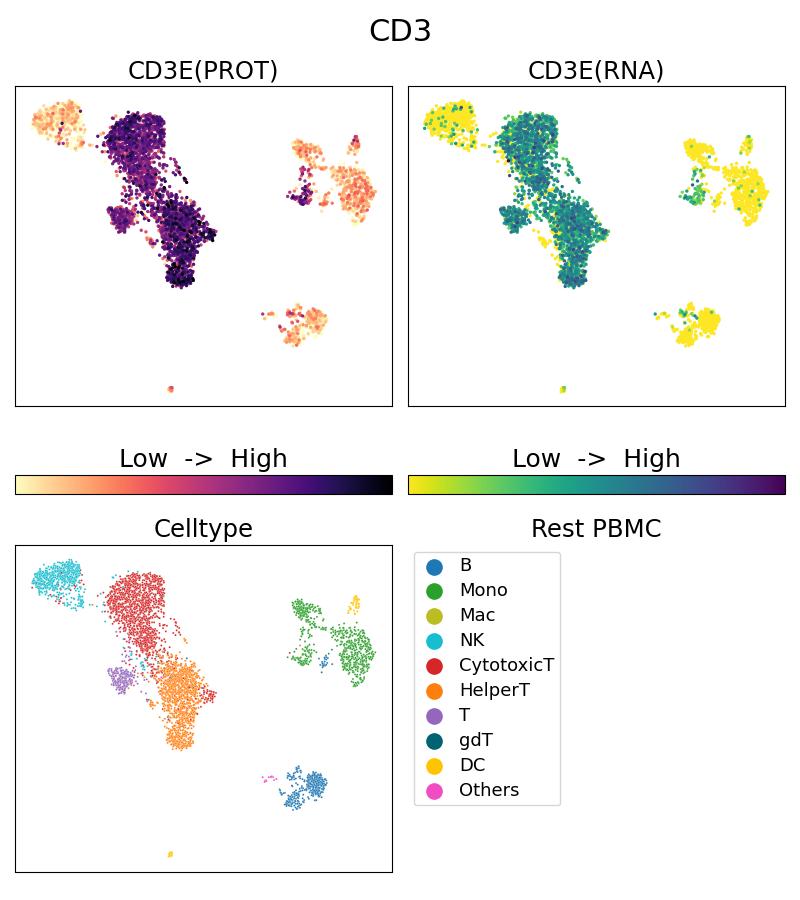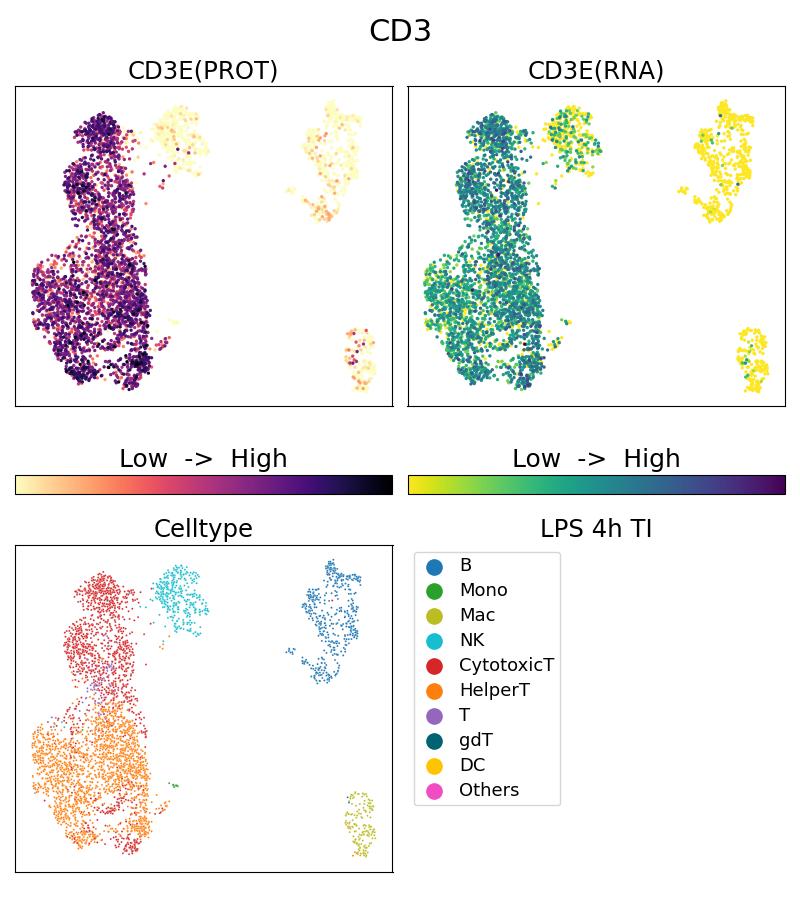验证数据展示
经过测试的应用
| Positive Single Cell (Intra) detected in | 10x Genomics Gene Expression Flex with Feature Barcodes and Multiplexing product. |
推荐稀释比
| 应用 | 推荐稀释比 |
|---|---|
| SINGLE CELL (INTRA) | <0.5ug/test |
| It is recommended that this reagent should be titrated in each testing system to obtain optimal results. | |
产品信息
G65133-1-5C targets CD3 in Single Cell (Intra) applications and shows reactivity with Human samples.
| 经测试应用 | Single Cell (Intra) Application Description |
| 经测试反应性 | Human |
| 免疫原 |
Human T cells 种属同源性预测 |
| 宿主/亚型 | Mouse / IgG2a, kappa |
| 抗体类别 | Oligo Conjugate |
| 产品类型 | Monoclonal |
| 全称 | MultiPro® 5CFLX Anti-Human CD3 (OKT3) |
| 别名 | CD3, CD3E, T3E, TCRE |
| 计算分子量 | 207 aa, 23 kDa |
| GenBank蛋白编号 | BC049847 |
| 基因名称 | CD3 |
| Gene ID (NCBI) | 916 |
| ENSEMBL Gene ID | ENSG00000198851 |
| RRID | AB_3673918 |
| 偶联类型 | 5CFLX |
| 完整寡核苷酸序列 | CGGAGATGTGTATAAGAGACAGTCGGATAAGACCTTCCCCATATAAGAAA |
| 条形码序列 | TCGGATAAGACCTTC |
| 形式 | Liquid |
| UNIPROT ID | P07766 |
| 储存缓冲液 | PBS with 1mM EDTA and 0.09% sodium azide , pH 7.3. |
| 储存条件 | 2-8°C Stable for one year after shipment. |
背景介绍
CD3 is a multimeric protein associated with the T-cell receptor (TCR) to form a complex involved in antigen recognition and signal transduction (PMID: 15885124). CD3 is composed of CD3γ, δ, ε, and ζ chains (PMID: 1826255). It is expressed by thymocytes in a developmentally regulated manner, T cells, and some NK cells (PMID: 3289580). The TCR recognizes antigens bound to major histocompatibility complex (MHC) molecules. TCR-mediated peptide-MHC recognition is transmitted to the CD3 complex, leading to the intracellular signal transduction (PMID: 11985657).
Protocols
| Our current MultiPro staining protocol for the cocktail | Download protocol |
| 10x Genomics CG000149_Demonstrated Protocol CellSurface Protein Labeling_Rev D.pdf | Download protocol |



